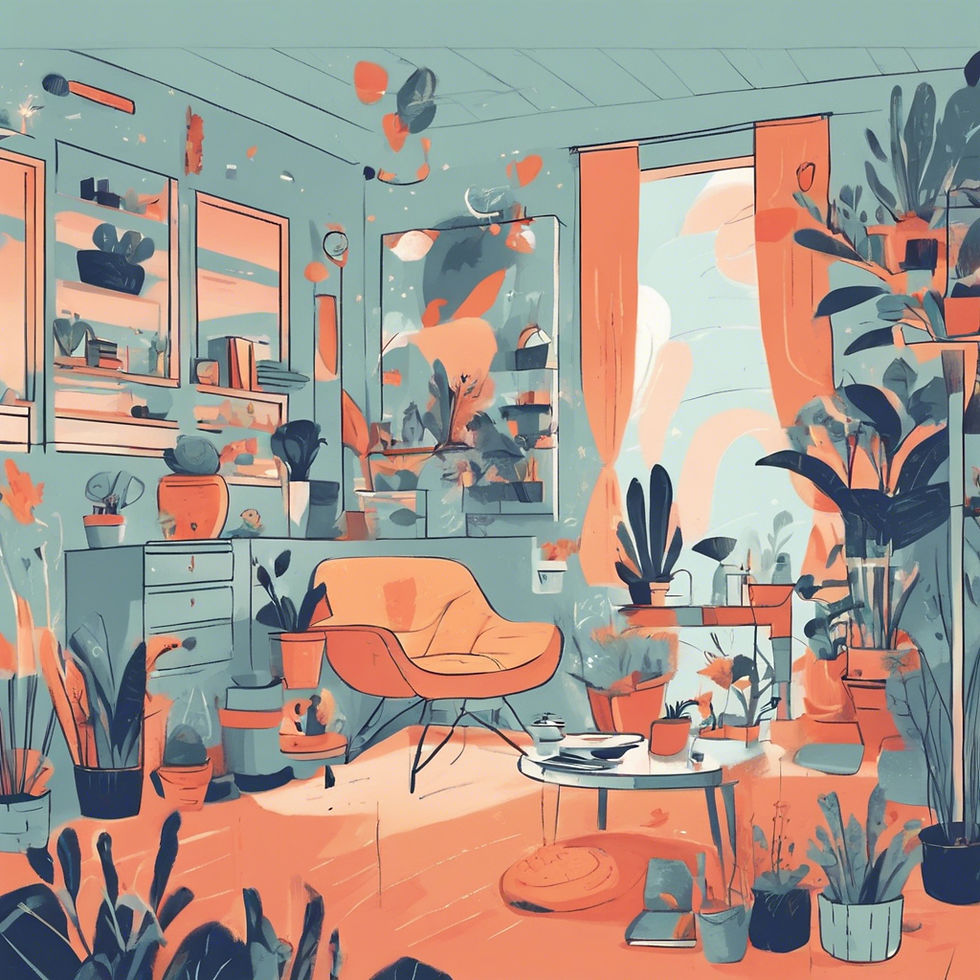

Revival Learning

Installations
Installations are a great way to create new format of curriculum based in phenomenology i.e. the understanding of experience. Ajahn innovated in creating a curriculum that used a different source of light and shift in perception to help people understand the space within and the space without ! Design looks at space as positive and negative space but the installation went a step ahead and looked at space within us (spaces that hold content) and the space without ( space that frames our form). A shift in light from visible to ultra violet light marked the creation of context for the curriculum.
Our installations have ranged from storytelling to creating compelling narratives to art shows and excelled at shifting perception of the audience. Most of our work is centred around local culture, way of life, traditions and the mundane. Creating connections between culture and learning, culture and environment and looking at culture as environment have been central to our installations.
The mass media culture has numbed us from processing emotions, feelings , learning and understanding. We are required to shift from frame to frame due to information overload without taking the time to thoroughly engage and be with the experience. At Ajahn, we have made a conscious effort to create experiences that are beyond the information overload.
However, what we also understood as a part of our action research is that educated adults do not have the capability to hold learning, they want to understand the experience with their mental faculties alone instead of allowing it to expand with their experience. Educated adults functioning through mind alone, boxed experiences as can understand or cannot understand. Children and illiterate groups to a large extent have a great flexibility to learning to hold till an experience becomes understandable, till they are fully capable of understanding what they consumed. This is a great feature of the design of learning.


Ultra violet light exhibit with fluorescence and phosphorescence phenomena designed , developed and displayed at Story of Light Festival in Goa in December 2014 ; at Hyderabad Literary festival in January 2016 and at Walden's Path School, Hyderabad in 2015. Project was funded by Dr.Madhulika Sagaram-Naidu and executed by the team at Adhya

Art for a cause was an art show and fundraiser based in storytelling and arts based learning. The art show conceived by Dr.Madhulika Sagaram -Naidu was funded by Dr.Uma Shankar Sagaram and executed by children at Adhya

Math and Origami was an art show based in mathematics and arts based learning. The art show conceived by Dr.Madhulika Sagaram -Naidu was funded by Ajahn and executed by team at Adhya


Doll staging or Bommalakoluvu is an art form popular across South India during Dusshera, Diwali and Sankranthi or Pongal. In Telangana, it is staged during Diwali, In Karnataka and Tamil Nadu during Dussehra; In Andhra during Sankranthi and in Kerala it has become an extant art form. Dr.Madhulika Sagaram-Naidu is passionate about preserving this art form and storytelling that comes along with it and this installation called "Gardens of the World" was created and documented in 2016, it was funded by Ajahn.



Shadow Puppetry is an ancient artform that is used as a therapy in temple performances as well as for storytelling and a tool for applied psychology in community settings using stories and poetic verses from Ramayana, Mahabharata and other local stories. At Ajahn, we are passionate about using the process of this artform to understand learning as revival as a continuous thread from the past.

Sense Based Learning

Perception










Visual Theory
Our art is characterized by our love and penchant for Chola bronzes and the lost wax process whose philosophy of work or Kula as it is called in southern India is based not in achieving an outward naturalistic beauty and dignity but a more spiritual beauty that is psychic and oozes dignity for the sculptor and the sculpture. Sri Aurobindo himself writes in 'The Renaissance in India' and describes the beauty of the Chola Bronzes.
"The dignity and beauty of the human figure in the best Indian statues cannot be excelled, but what was sought and what was achieved was not an outward naturalistic, but a spiritual and a psychic beauty, and to achieve it the sculptor suppressed, and was entirely right in suppressing, the obtrusive material detail and aimed instead at purity of outline and fineness of feature. And into that outline, into that purity and fineness he was able to work whatever he chose, mass of force or delicacy of grace, a static dignity or a mighty strength or a restrained violence of movement or whatever served or helped his meaning. A divine and subtle body was his ideal.
The singular skill and delicacy of the bronze work of the southern religions, a self-expression of the spirit and ideals of a great nation and a great culture which stands apart in the cast of its mind and qualities among the earth’s peoples, famed for its spiritual achievement, its deep philosophies and its religious spirit, its artistic taste, the richness of its poetic imagination, and not inferior once in its dealings with life and its social endeavour and political institutions.”
We have chosen to incorporate the process of the lost wax method into our water colour paintings by a focus on the dedicated and steady fineness of outline and interpretation of beauty through outlines to allow emergence of delicacy, grace, dignity, strength or whatever quality is to be depicted to create meaning from the artwork. Subtlety adds to sublime expression of art in our water colour paintings.


Watercolor Durga


Watercolor VanaDurga

Vernacular Learning



We are also inspired by the way of vernacular life across India; In the vernacular , learning and art have different connotations. For example, taking the concept of the watercolour paintings where we focus on steady fineness of outline and interpretation of beauty through outlines; further ahead...we look at vernacular interpretations. In the vernacular, the feminine is interpreted as the basis of all existence. Vanadurga is considered the foundation for Jaati or the genus , that which defines the source or origins basically the genetics. Whereas, Durga is considered the basis for Vritti or ego manifestations or all the activity that leads to a profession or occupation, training, formal learning etc. it can be considered epigenetics.
This is particularly interesting because in vernacular systems, perception and sound are important features of the art form as well as learning. A potter does not facilitate the learning of pottery for his child through seeing, it is done through sound by tapping clay day in and day out! Likewise, if you want to learn to make Bhakri you have to learn how to beat the dough correctly , the sound of beating the dough on the kitchen counter determines whether the Bhakri will stay together or not! This is a result of Vritti or occupational training , the epigenetics not the Jaati. Jaati or genetics is decided by nature where as Vritti or epigenetics is decided by nurture.
A lot of people think Jaati is profession, it is not! Jaati refers to your origins, the genetics of your family lines that pass down from generation to generation. It cannot be changed unless nature decides to change it through mutations, this is known scientifically also. ART and learning have such deep rooted and fascinating narratives in the vernacular!!

Contextual Aesthetics
"The central idea of aesthetic contextualism is this: a work of art is an artifact of a special sort, an object that is the product of human invention at a particular time and place, an essentially historically embedded object, that has neither art status, nor determinate identity, nor aesthetic character, nor definite significance, apart from the cultural context in which the work is created and through which it is constituted."

Akhilandeshwari riding a makara

Meenakshi with her Parrot

Kamakshi sitting in Virasana

Narratives
In the cultures of the vernacular, narratives are laden with rich layers of intricate details. One such narrative about stone cutting is contextually placed both culturally and historically. According to recorded history, a group of 18 velir clans from Indus valley moved southward taking with them Khodiyar maa who rides a crocodile and her six sisters. When they settled down in the south thousands of years ago, they established Khodiyar maa as Akhilandeshwari, the goddess that rides a makara. What is interesting is the cultural shift ; while Khodiyar maa rode a crocodile, Akhilandeshwari rode a makara ( a combination of a crocodile and an elephant). The crocodile represents fear, Khodiyar maa riding it represents the goddess riding fear!! When the velirs lived in the Indus Valley, they were water borne clans navigating through channels and rivers with their ships and boats and the crocodile perhaps was their main adversary in the waters. Hence, they prayed to a goddess who rode the crocodile thereby rode fear; this group of Velirs were called Kaivartha velir. When the Velirs moved south, they first settled in the Attapady valley in present day Kerala-Tamil Nadu. This valley and the forests are known for their Elephants, so now the crocodile riding Khodiyar got transformed into Akhilandeshwari who rides a makara; a combination of crocodile and the elephant!!
Following this emergence of the goddess who rides a makara, the cultural narrative also focuses on the goddess Meenakshi with fish eyes who is accompanied by a parrot and goddess Kamkshi who sits in Virasana holding her weapons. According to cultural narratives, three groups of Kaivartha Velir with their goddesses Akhilandeshwari, Meenakshi and Kamakshi moved from the Elephant groves further inland and settled down in different areas. The group with Meenakshi went towards Madurai and merged with the Pandyas who had a similar deity with three breasts and a parrot. The group with Akhilandeshwari went to Trichy and later expanded to Thanjavur establishing the Chola kingdom. The third group with Kamakshi, moved to present day Kancheepuram and established themselves there first working under the sathavahans , also a Velir group and later establishing themselves as Pallavas in Kanchi.
If this is the cultural narrative from the historical angle, the narrative from vernacular culture narrates this whole saga as three types of stone cutters!! According to popular lore, there are three types of stone cutters; those that cut stone to make a living and feed their families ( Meenakshi) , those that cut stone for creative pursuits ( Kamakshi) and those that cut stones to build temples
(Akhilandeshwari)... Aesthetics is always situated in culture and cultural narratives!!
Khodiar Maa and her six sisters were converted into Saptamatrika and venerated along with Ayyanar ( a form of the Indus Valley Pashupati Rudra) and offered clay horses, elephants and cows in different sizes. This tradition continues in the groves of Ayyanar in Tamil Nadu to this day!! Over time, the tradition of offering clay dolls to Ayyanar and Saptamatrika got translated into an event during different festivals in south India and came to be known as Bombe Habba in Karnataka, Golu in Tamil Nadu, Bommalakoluvu in Telangana and Andhra. Golu was observed in some parts of Kerala but now is an extinct art and craft form.